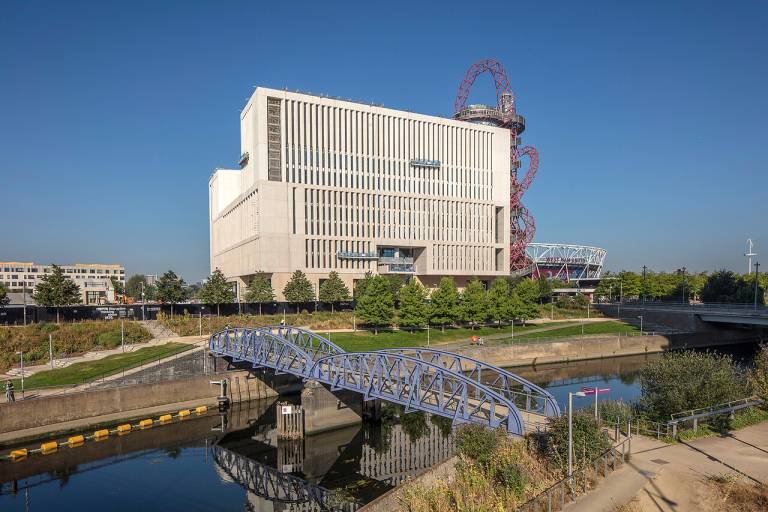Sustainable buildings at UCL push boundaries on carbon performance
New buildings across UCL are designed to be sustainable: using thermally efficient materials, minimising waste and energy consumption, while contributing towards more biodiverse landscapes.

14 December 2023
Photo credit: Morley von Sternberg
As part of UCL’s drive to reduce carbon emissions, the university has developed a Sustainable Building Standard that sets ambitious targets for the design, build and operation of new and existing buildings.
At UCL East, the university’s new campus in East London that opened in 2022–23, every aspect of the development has a sustainable focus to create a healthy and comfortable working and living environment that is climate resilient and has a low environmental impact.
The first new buildings to open on the campus – One Pool Street (a mixed-use academic and residential building) and Marshgate (a new collaborative space to promote interdisciplinary research and innovation) – exemplify UCL’s Sustainable Building Standard.
“This lays out standards and targets for how we will deliver a sustainable built environment at UCL,” explains Ben Stubbs, UCL Head of Sustainable Built Environment, including optimising thermal comfort, daylight and energy performance.”
The buildings have green roofs and external landscaping to complement the ecology and biodiversity of its location in Queen Elizabeth Olympic Park; and regulation of internal temperatures is improved through the buildings’ thermal mass. This means that heat is slowly absorbed and released by the dense building materials (particularly concrete) helping to reduce temperature fluctuations. Construction materials with lower environmental impact and recycled content have been prioritised, and waste is minimised.
Sustainability measures such as solar panels and mechanical ventilation with heat recovery are incorporated into the buildings. Heat is also recovered from waste-water in student bedrooms and water consumption is minimised, for example through efficient toilet flushing systems.
“Ensuring our buildings are more sustainable is an essential part of the university’s increasing efforts to reduce our carbon emissions.”
Elsewhere, UCL’s first net-zero-carbon building, PEARL (Person-Environment-Activity Research Laboratory) also opened in 2022–23. The building provides state-of-the art space for researchers exploring how people interact with their environment. It is 4,000 square metres and 10m high, allowing teams to create life-sized, controlled condition environments including a railway station and high street, where people’s interaction with the environment, modes of transport and each other can be examined.
The building, which received an A+ rating Energy Performance Certificate (EPC), has excellent thermal performance for a building of this type, efficient mechanical and electrical systems and solar panels that cover the entire roof. It is UCL’s largest on-site renewable energy installation to date. Surplus energy from solar panels is used to supply neighbours on the estate, with the potential to run as a ‘carbon negative’ building.
“Ensuring our buildings are more sustainable is an essential part of the university’s increasing efforts to reduce our carbon emissions, as well as providing students and staff with a more comfortable and healthier environment in which to study sustainability,” says Ben.
 Close
Close


